
Maintaining a beautiful, green lawn takes a lot of work — hours nearly every weekend — and a whole toolshed of lawn care equipment. These are the 11 lawn care tools that are essential for DIY lawn care.
1. Lawn Mower
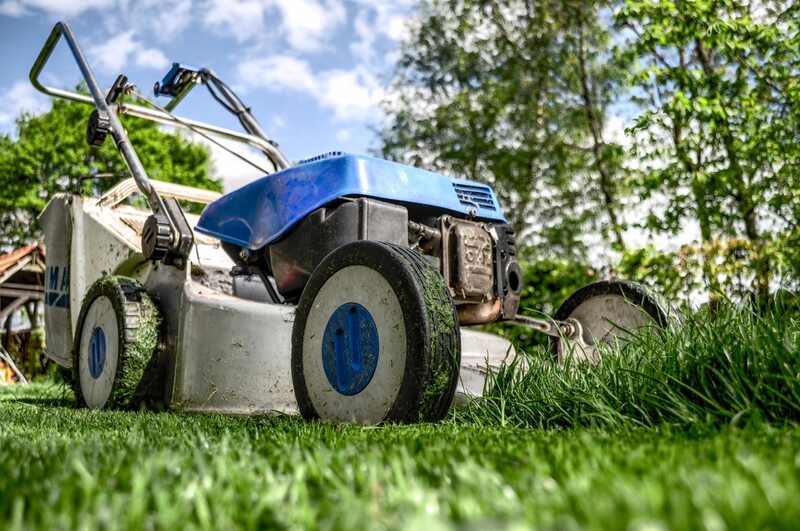
The No. 1 lawn care tool you need is a lawn mower. During your lawn’s active growing season, you’ll need to cut the grass once a week with a lawn mower.
Which lawn mower is best for you and your lawn?
- How big is your lawn? Large yards often require a ride-on mower, and small lawns can be cut with a walk-behind push mower or reel mower.
- What’s your budget? Lawn mowers come in a vast price range, ranging from less than $100 for a reel mower to a few thousand dollars for a ride-on mower.
- What power source do you want? Your options include electric or gas. If you choose electric, you’ll also have to consider whether you want a corded or battery-powered lawn mower.
Pro Tip: With battery-operated lawn care tools, batteries are often interchangeable between tools of the same brand, which means you’ll have fewer battery chargers to store.
2. String Trimmer
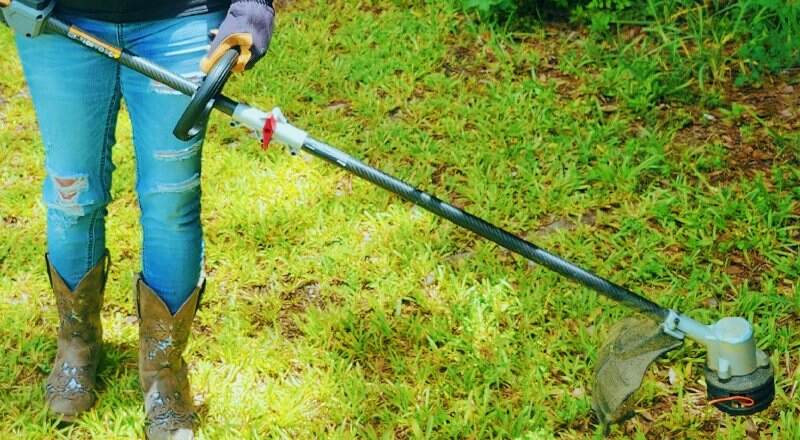
You will need a string trimmer to cut grass where your lawn mower can’t reach, like around kid’s playsets, flower beds, or alongside your house or fence.
String trimmers can be gas-powered, electric-powered (with a cord — limiting your reach), and battery-powered (you are only limited by the battery’s runtime).
3. Edger
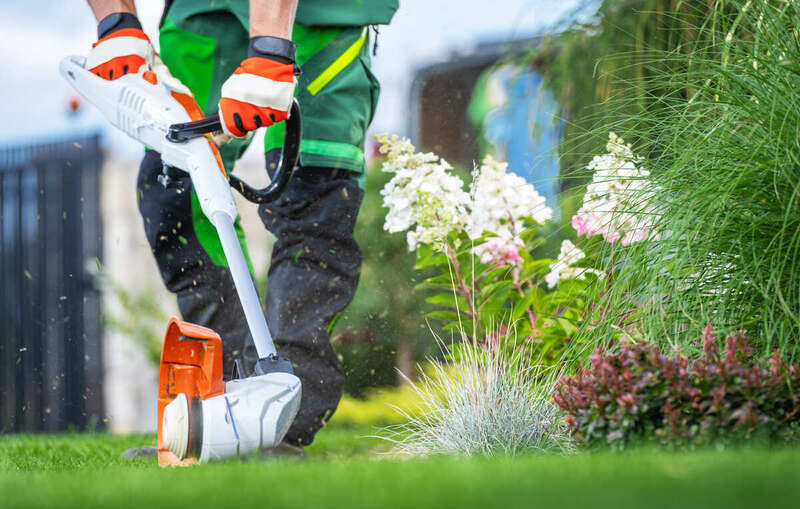
An edger creates distinct boundaries in the landscape by cutting a small gap in the soil between the grass and garden beds or between grass and another surface, such as a paved walkway.
Some people will use their string trimmer as an edger, but a stand-alone edger tool will achieve a crisper, more refined look.
Different types of edgers include:
- Manual: These edgers take patience, precision, and physical labor. Examples include spade-based edgers, roller-based edgers, and hand shears.
- Motorized: These edgers are powered by gas, electric cords, or batteries. Some motorized edgers are built into string trimmers while others are high-powered, walk-behind, wheeled machines.
4. Leaf Blower
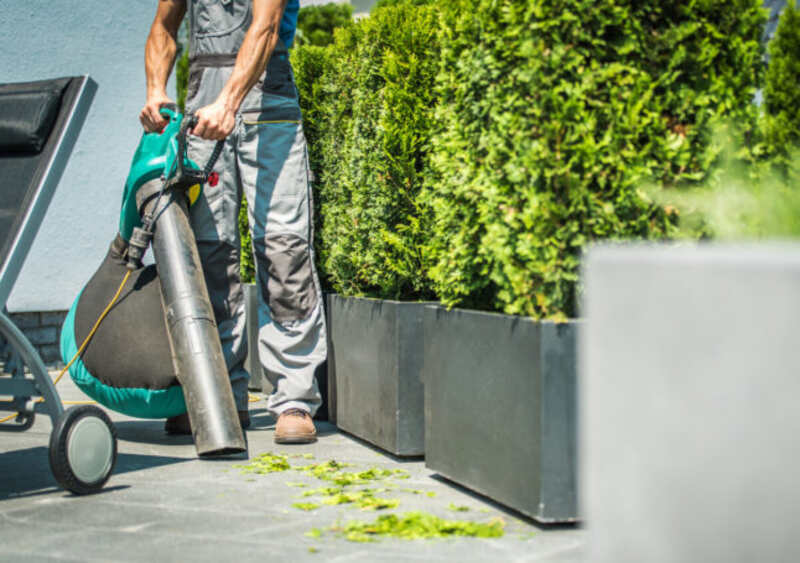
A leaf blower makes cleaning after mowing and edging your lawn a breeze –– you don’t want to leave all those grass clippings on the sidewalk or driveway. It also comes into play in the fall if you have trees near your grass.
There are 3 basic kinds of leaf blowers:
5. Spreader
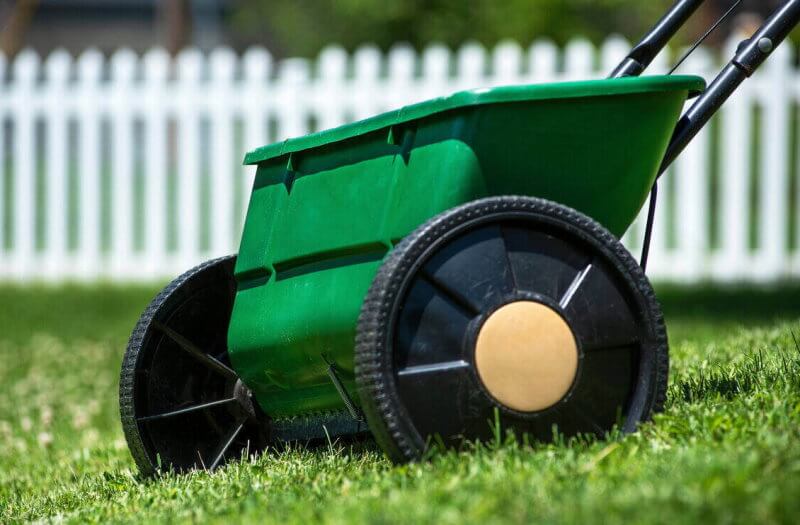
A spreader helps to achieve uniform coverage of fertilizers, herbicides, grass seeds, granular pesticides, and soil amendment treatments. Since there are so many uses for a spreader, it is an essential lawn care tool for homeowners.
There are different styles and sizes of spreaders, so you’ll need to assess your lawn size and usage to determine which option best suits your needs.
- Hand-held spreader
- Walk-behind spreaders (includes broadcast and drop spreaders)
- Chest/shoulder-mounted spreader
- Tow-behind spreader
Bonus: If you live in an area that gets snow in winter, you can also use your spreader for ice melt.
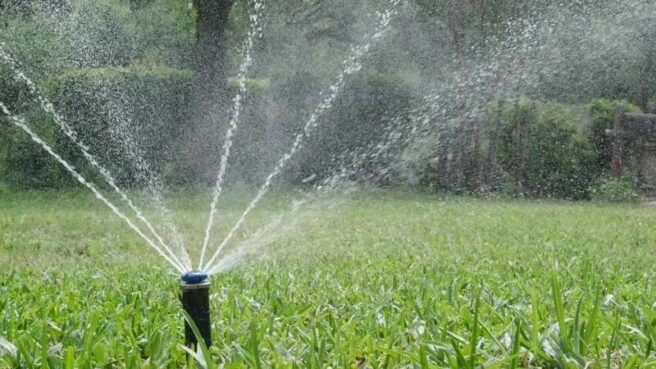
6. Sprinkler System
Your lawn needs water to stay green and thrive. A sprinkler system saves you from holding a hose in your yard and trying to water your grass evenly.
Sprinkler systems can be as simple as a sprinkler attached to a hose, spraying water in a particular area, or a smart sprinkler that you can program to water your lawn during certain hours and only when needed. (No need to water if it has just rained.)
In-ground irrigation systems are another option. These can be programmed to water your grass early in the morning, which is the Best Time to Water Your Lawn.
Honorable Mention: Gloves
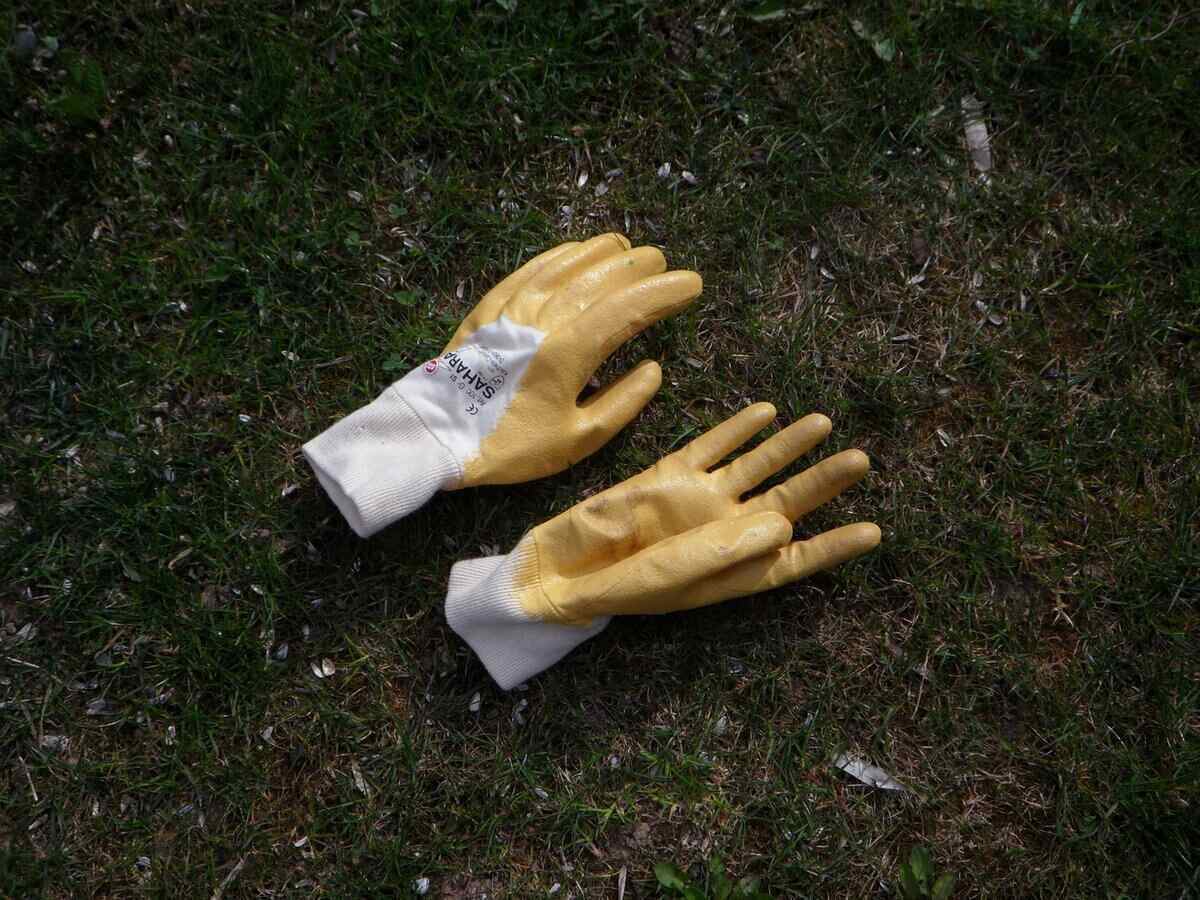
You should wear gloves when you handle fertilizers, pesticides, herbicides, or ice melt. Gloves can also protect your hands from blisters, cuts, or scrapes while working on your lawn.
Garden gloves are readily available in different colors, patterns, and styles at home improvement stores.
When to Hire a LawnStarter Lawn Care Pro
Lawn care takes a lot of work and a lot of tools. Those tools need maintenance — your mower blades need to be sharpened at least once a year, for example. And you need a storage shed or space in your garage for your lawn mower, string trimmer, leaf blower, and fertilizer spreader.
Or you can save all that time sweating in your yard and let one of LawnStarter’s local lawn care pros handle your lawn mowing, grass trimming, and fertilizer spreading. Take lawn care off your to-do list. (Added bonus: You’ll also have more room in your storage shed or garage.)
Main Image Credit: Pexels